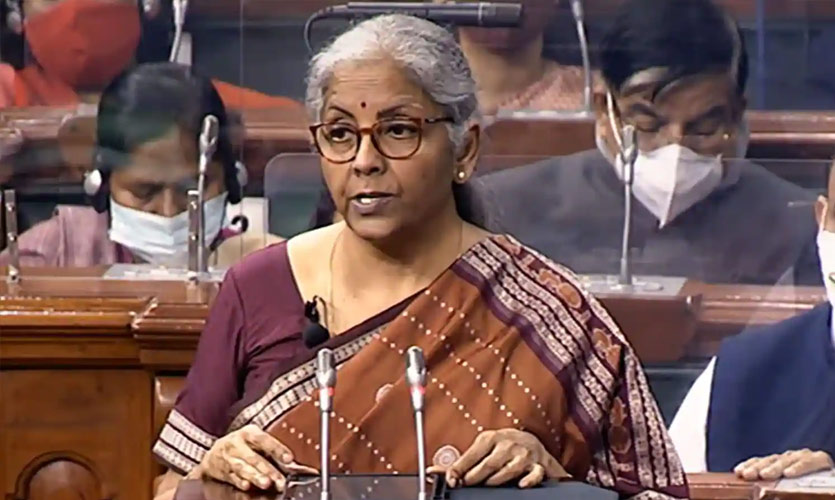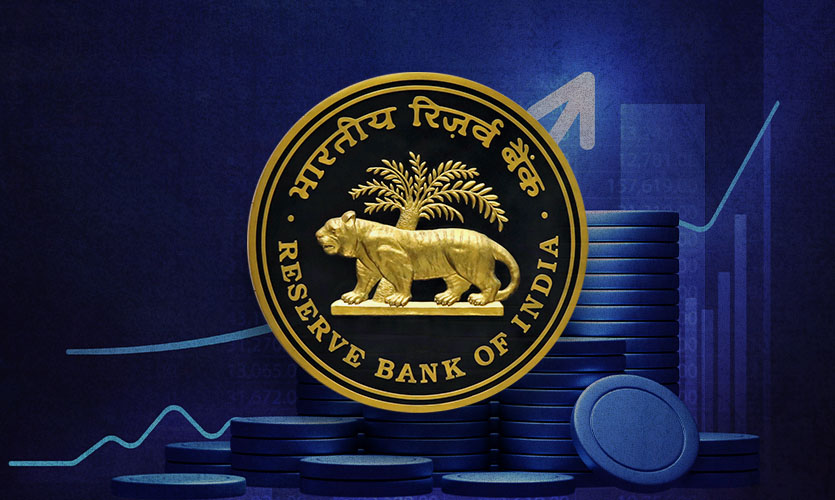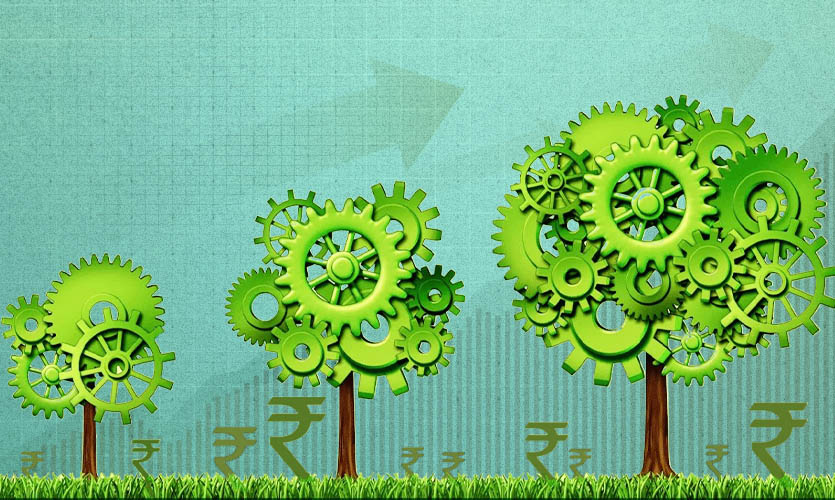Finance Minister Nirmala Sitharaman presented the Union Budget 2022-23 today in the Parliament, during her shortest budget speech so far. She made several key announcements and highlighted the government’s focus for the coming financial year.
The key highlights of the budget includes her announcement on the big private infrastructure plan guided by the Rs 100 lakh crore PM Gati Shakti National Master Plan that aims to improve the logistics connectivity and make it seamless throughout the country. As per Sitharaman, the Gati Shakti plan is a large-scale infrastructure development undertaking that will encompass the ‘engines’ of growth, namely roads, railways, mass transport, and seamless multi-modal connectivity. The national highways network will be expanded by 25,000 kilometres in 2022-23, with an outlay of Rs 20,000 crores via financing. 400 new-generation energy efficient Vande Bharat trains will be developed and manufactured over the next three years, along with the development of 100 PM Gati Shakti cargo terminals for multi-modal logistics facilities.
Amidst the ongoing controversy surrounding cryptocurrency regulation, the finance minister made two important announcements related to crypto. Sitharaman announced the release of the digital rupee using blockchain and other technologies by India’s central bank, the Reserve Bank of India (RBI), in 2022-23. “The introduction of the central bank digital currency will give a big boost to the digital economy. Digital currency will also be a more cheaper and efficient currency management system,” she said. The move is part of the government’s ‘Digital India’ programme.
Additionally, income from transfer of virtual assets will be taxed at 30 percent in order to track and capture the details of all crypto transactions. The finance minister also proposed a 1 percent tax deduction at source on payments made related to purchase of virtual assets. “No deduction in respect of any expenditure or allowance shall be allowed while computing such income except cost of acquisition. Further, loss from transfer of digital asset cannot be set off against any other income,” said Sitharaman. She further added, “Gift of virtual digital asset is also proposed to be taxed at the hand of the recipient.”
Budget 2022-23 has proposed no change in income tax slabs, however, the finance minister proposed that the centre and state government employees’ tax deduction limit should be increased from 10 percent to 14 percent. This is supposed to help the social security benefits of state government employees and bring them at par with that of central government employees. A reduction in corporate surcharge from 12 percent to 7 percent was proposed by the finance minister.
FM Sitharaman also announced the launch of an open platform for the National Digital Health Ecosystem that will consist of digital registries of health providers and health facilities, unique health identity, consent framework and universal access to health facilities. Due to the rise in mental health problems in people of all ages during the pandemic, Sitharaman added that, “To better access to quality mental health counselling and care services. A national telly mental health programme will be launched which will include a network of 23 telly mental health centres of excellence with the National Institute of Mental health and Neurosciences (NIMHANS) being the nodal centre.”
The government will hold an auction for 5G spectrum this year and the implementation of services will take place during 2022-23. The spectrum auction gives telecom companies the licence to launch next-generation wireless communication services for the masses. The government plans to introduce a scheme for design-led manufacturing in 5G as part of the Production Linked Incentive (PLI) scheme to boost local manufacturing.
Further, India plans to issue E-passports that will be rolled out in 2022-23 to enhance convenience for citizens. The passport jacket will contain an electronic chip which will have important security-related data encoded on it.
As a part of India’s climate action, the finance minister announced the plan to allocate Rs 19,500 crores to boost manufacturing of solar modules under the government’s flagship PLI scheme. The scheme has the potential to create 60 lakh new jobs and additional production of 30 lakh crore jobs during the next five years. “To facilitate domestic manufacturing for the ambitious goal of 280 GW of installed solar capacity by 2030, additional allocation of Rs 19,500 cr for PLI for manufacturing of high-efficiency modules with priority to fully integrate manufacturing units to solar PV modules will be made,” said Sitharaman in her speech. Along with that, the Centre also began provisions that will step up initiatives to boost EV infrastructure and EV ecosystem to achieve its broader decarbonisation goals. She further added, “To promote a shift to the use of public transport in urban areas, special mobility zones with zero fossil fuel policy to be introduced.”
The Emergency Credit Line Guarantee Scheme (ECLGS) that was launched during the pandemic as a means to provide credit facilities to business enterprises, small and medium businesses (MSMEs), has been extended till March 2023. The union finance minister said that the cover of the scheme will be expanded by Rs 50,000 crores to Rs 5 lakh crores. An additional amount has reportedly been earmarked in the budget for hospitality related sectors, and the government will take steps to make the MSME sector more resilient.
In a move to improve the self-reliance of the education sector initiatives, a push for PM eVIDYA initiatives was announced as a boost to the sector. The implementation of National Education Policy (NEP) 2020 is a project of prominent importance. Under PM eVIDYA, the initiative of ‘One Class One TV Channel’ would be promoted. Currently, there are about 12 channels that educate students of classes 1 to 12. Under the new Union Budget, this would be expanded to 200 TV channels.
Finance Minister Nirmala Sitharaman focused on ensuring assured income to farmers with an announcement of Rs 2.37 lakh crores towards direct payments for minimum support price (MSP) to wheat and paddy farmers for the fiscal year 2022-23. “Farm procurement value for FY23 to be ₹2.37 trillion,” she said in her speech. Indian Railways will also develop new products and efficient logistics services for small farmers and Small and Medium Enterprises.
The minister also announced during the budget session that the Special Economic zones (SEZ) Act will be rewritten. Under the new legislation, states can become partners in ‘Development of Enterprise and Service Hubs’, and cover all large existing and new industrial enclaves to optimally utilise available infrastructure and enhance the competitiveness of exports.
Import duty on cut and polished diamonds and gemstones, currently at 7.5 percent, will be reduced to 5 percent, and to nil on sawn diamond, to boost the sector. The government will also facilitate export of jewellery through e-commerce, for which it will implement a “simplified regulatory framework” by June this year.
The Pradhan Mantra Awas Yojana will receive Rs 48,000 crores. The Centre’s flagship housing for all scheme will expedite construction-related approvals for the middle class and economically weaker sections in urban areas.
Special attention has been given to the development of the north-eastern region with the launch of a new scheme, PM Development Initiative for North East, to promote its growth. Sitharaman also said that villages on the northern border of India will be covered under a new vibrant village programme to enhance development.
Read more: Budget 2022: Rs 2.37 Lakh Crores MSP To Be Paid To Farmers, Focus Directs On Agri-Tech
Government Priorities For ‘Amrit Kaal’
The finance minister underlined four key pillars of the government’s focus during India’s ‘Amrit Kaal’, spanning from the 75th year of Independence to the 100th. “During Amrit Kaal, our government aims to achieve the vision for India@100 set out by the Prime Minister in his Independence Day Address,” said Sitharaman. She informed that PM Gati Shakti is one of the top priorities of the government, driven by seven engines – airports, logistics infrastructures, mass transport, ports, railways, roads, and waterways – that will help in taking the economy forward.
Under the PM Gati Shakti plan, as informed by the finance minister, the government will formulate a plan for expressways to facilitate faster movement of people and goods. Sitharaman also informed that the national highway circuit will be increased by 25,000 kms during 2022-2023.
In addition to PM Gati Shakti, the other three priorities highlighted are: “inclusive development; productivity enhancement and investment, sunrise opportunities, energy transition, and climate action; and financing of investments”.
“Artificial Intelligence (AI), Geospatial Systems and Drones, semiconductor and its ecosystem, Space Economy, genomics and pharmaceuticals, green energy, and clean mobility systems have immense potential to assist sustainable development at scale and modernise the country,” she said. Reportedly, the government will also be contributing to the research and development for “sunrise opportunities”.
The finance minister said that the budget provides an inclusive blueprint for the next 25 years, directly benefiting the youth, women, farmers, the Scheduled Castes and the Scheduled Tribes of India.










